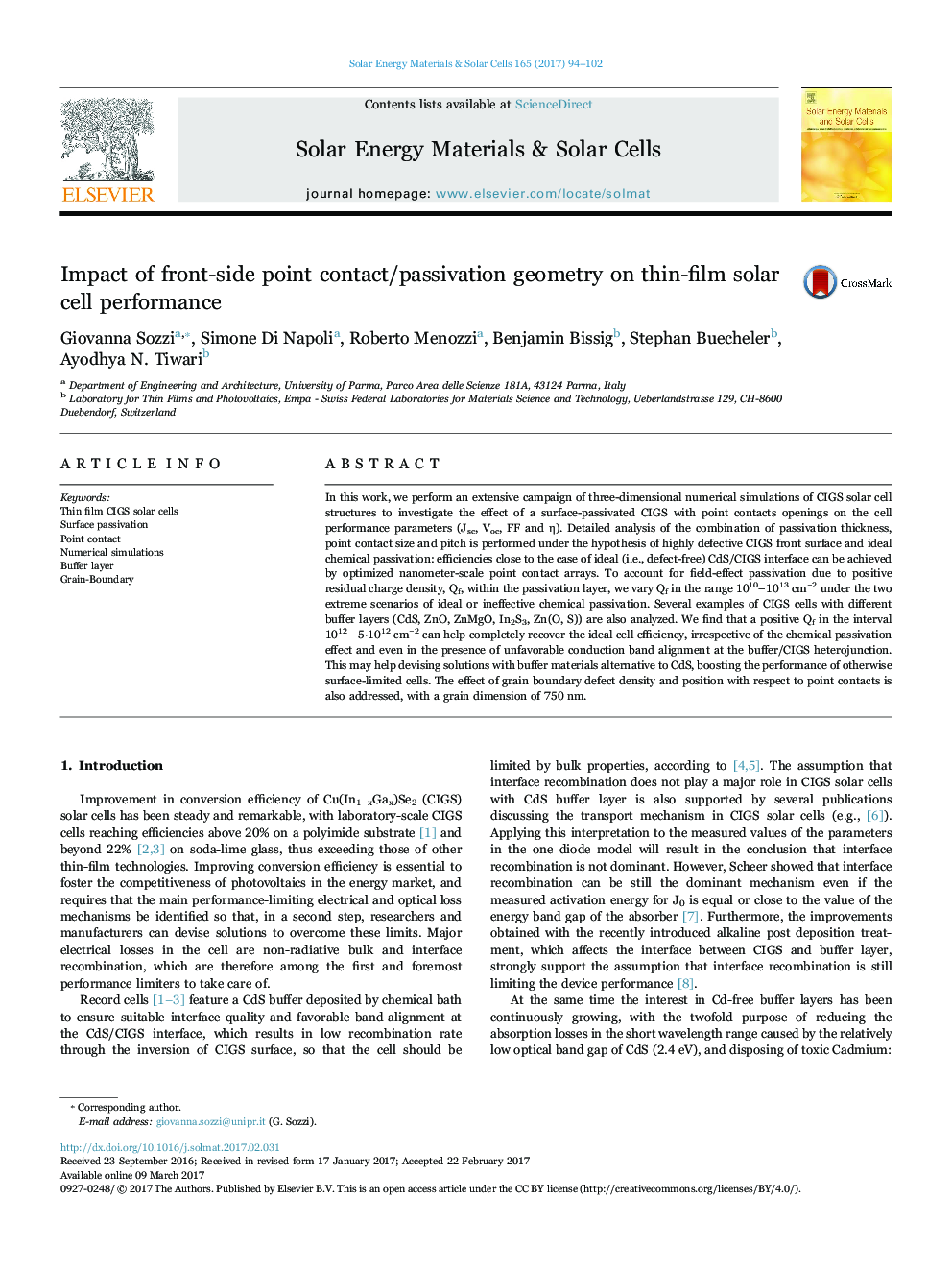| کد مقاله | کد نشریه | سال انتشار | مقاله انگلیسی | نسخه تمام متن |
|---|---|---|---|---|
| 6457144 | 1420658 | 2017 | 9 صفحه PDF | دانلود رایگان |
- Point contact plus passivation geometry at defective CdS/CIGS interface is simulated.
- Nanometer-scale point contact opening and pitch give the best efficiency recovery.
- Series resistance introduced by passivation ultimately limits the cell performance.
- The field-effect passivation plays the major role in recovering the cell efficiency.
- The grain boundary distance from point contact weakly influences the performance.
In this work, we perform an extensive campaign of three-dimensional numerical simulations of CIGS solar cell structures to investigate the effect of a surface-passivated CIGS with point contacts openings on the cell performance parameters (Jsc, Voc, FF and η). Detailed analysis of the combination of passivation thickness, point contact size and pitch is performed under the hypothesis of highly defective CIGS front surface and ideal chemical passivation: efficiencies close to the case of ideal (i.e., defect-free) CdS/CIGS interface can be achieved by optimized nanometer-scale point contact arrays. To account for field-effect passivation due to positive residual charge density, Qf, within the passivation layer, we vary Qf in the range 1010-1013 cmâ2 under the two extreme scenarios of ideal or ineffective chemical passivation. Several examples of CIGS cells with different buffer layers (CdS, ZnO, ZnMgO, In2S3, Zn(O, S)) are also analyzed. We find that a positive Qf in the interval 1012- 5·1012 cmâ2 can help completely recover the ideal cell efficiency, irrespective of the chemical passivation effect and even in the presence of unfavorable conduction band alignment at the buffer/CIGS heterojunction. This may help devising solutions with buffer materials alternative to CdS, boosting the performance of otherwise surface-limited cells. The effect of grain boundary defect density and position with respect to point contacts is also addressed, with a grain dimension of 750 nm.
Journal: Solar Energy Materials and Solar Cells - Volume 165, June 2017, Pages 94-102
